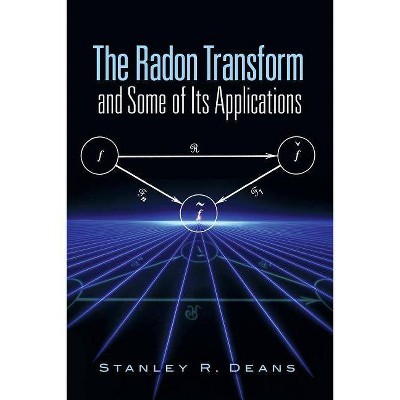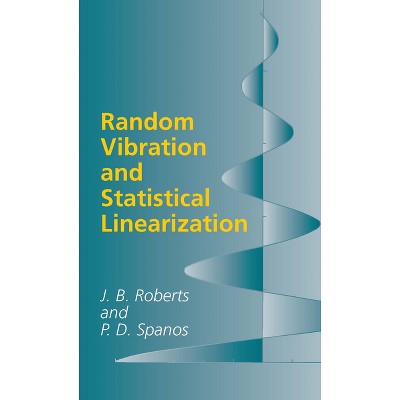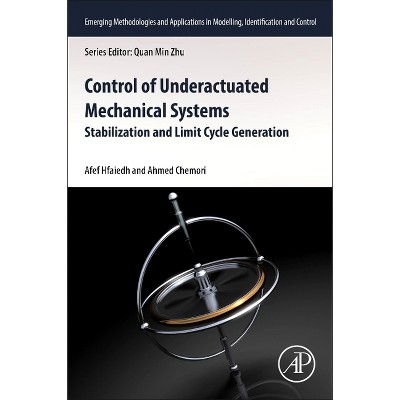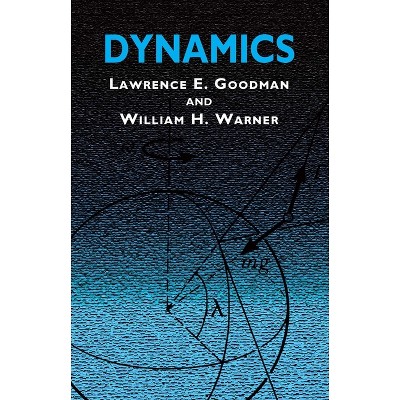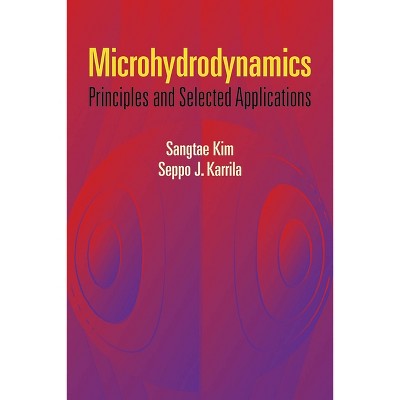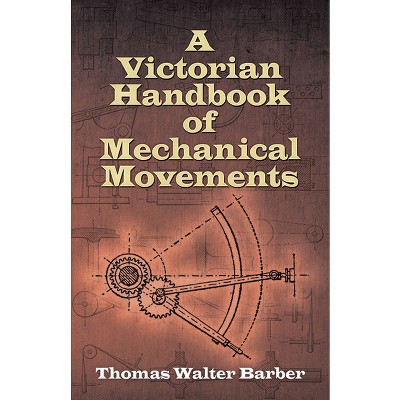Sponsored

Hilbert Transform Applications in Mechanical Vibration - by Michael Feldman (Hardcover)
In Stock
Sponsored
About this item
Highlights
- Hilbert Transform Applications in Mechanical Vibration addresses recent advances in theory and applications of the Hilbert transform to vibration engineering, enabling laboratory dynamic tests to be performed more rapidly and accurately.
- About the Author: Michael Feldman, Technion, IsraelMichael Feldman is Computer System Engineer and Adjunct Senior Lecturer in the Faculty of Mechanical Engineering, Technion.
- 320 Pages
- Science, Mechanics
Description
About the Book
"Hilbert Transform Applications in Mechanical Vibration addresses recent advances in research and applications of the modern Hilbert transform to vibration engineering, through which laboratory dynamic tests can be produced more quickly and accurately. The author integrates important pioneering developments in signal processing and mathematical models with typical properties of mechanical constructions such as resonance, dynamic stiffness and damping. This unique merger of technical properties and digital signal processing allows the instant solution of a variety of engineering problems and in-depth exploration of the physics of vibration by analysis, identification and simulation. Hilbert Transform Applications in Mechanical Vibration employs the author's pioneering applications of the Hilbert Vibration Decomposition method characterized by high frequency resolution, and provides a comprehensive account of the main applications, covering dynamic testing and extraction of the modal parameters of nonlinear vibration systems including the initial elastic and damping force characteristics."--Book Synopsis
Hilbert Transform Applications in Mechanical Vibration addresses recent advances in theory and applications of the Hilbert transform to vibration engineering, enabling laboratory dynamic tests to be performed more rapidly and accurately. The author integrates important pioneering developments in signal processing and mathematical models with typical properties of mechanical dynamic constructions such as resonance, nonlinear stiffness and damping. A comprehensive account of the main applications is provided, covering dynamic testing and the extraction of the modal parameters of nonlinear vibration systems, including the initial elastic and damping force characteristics. This unique merger of technical properties and digital signal processing allows the instant solution of a variety of engineering problems and the in-depth exploration of the physics of vibration by analysis, identification and simulation.This book will appeal to both professionals and students working in mechanical, aerospace, and civil engineering, as well as naval architecture, biomechanics, robotics, and mechatronics.
Hilbert Transform Applications in Mechanical Vibration employs modern applications of the Hilbert transform time domain methods including:
- The Hilbert Vibration Decomposition method for adaptive separation of a multi-component non-stationary vibration signal into simple quasi-harmonic components; this method is characterized by high frequency resolution, which provides a comprehensive account of the case of amplitude and frequency modulated vibration analysis.
- The FREEVIB and FORCEVIB main applications, covering dynamic testing and extraction of the modal parameters of nonlinear vibration systems including the initial elastic and damping force characteristics under free and forced vibration regimes. Identification methods contribute to efficient and accurate testing of vibration systems, avoiding effort-consuming measurement and analysis.
- Precise identification of nonlinear and asymmetric systems considering high frequency harmonics on the base of the congruent envelope and congruent frequency.
- Accompanied by a website at www.wiley.com/go/feldman, housing MATLAB(R)/ SIMULINK codes.
From the Back Cover
Hilbert Transform Applications in Mechanical VibrationMichael Feldman, Technion - Israel Institute of Technology
Hilbert Transform Applications in Mechanical Vibration addresses recent advances in theory and applications of the Hilbert transform to vibration engineering, enabling laboratory dynamic tests to be performed more rapidly and accurately. The author integrates important pioneering developments in signal processing and mathematical models with typical properties of mechanical dynamic constructions such as resonance, nonlinear stiffness and damping. A comprehensive account of the main applications is provided, covering dynamic testing and the extraction of the modal parameters of nonlinear vibration systems, including the initial elastic and damping force characteristics. This unique merger of technical properties and digital signal processing allows the instant solution of a variety of engineering problems and the in-depth exploration of the physics of vibration by analysis, identification and simulation.
This book will appeal to both professionals and students working in mechanical, aerospace, and civil engineering, as well as naval architecture, biomechanics, robotics, and mechatronics.
Hilbert Transform Applications in Mechanical Vibration employs modern applications of the Hilbert transform time domain methods including:
- The Hilbert Vibration Decomposition method for adaptive separation of a multi-component non-stationary vibration signal into simple quasi-harmonic components; this method is characterized by high frequency resolution, which provides a comprehensive account of the case of amplitude and frequency modulated vibration analysis.
- The FREEVIB and FORCEVIB main applications, covering dynamic testing and extraction of the modal parameters of nonlinear vibration systems including the initial elastic and damping force characteristics under free and forced vibration regimes. Identification methods contribute to efficient and accurate testing of vibration systems, avoiding effort-consuming measurement and analysis.
- Precise identification of nonlinear and asymmetric systems considering high frequency harmonics on the base of the congruent envelope and congruent frequency.
- Companion website houses MATLAB(R)/ SIMULINK codes.
About the Author
Michael Feldman, Technion, IsraelMichael Feldman is Computer System Engineer and Adjunct Senior Lecturer in the Faculty of Mechanical Engineering, Technion. His research focuses on signal processing, vibration engineering; analysis of dynamic signals and mechanical systems, modal testing and monitoring and diagnostics of machines. He is a past editor of the Journal Mechanical Systems and Signal Processing and has authored two books in Russian as well as contributions to the Encyclopedia of Structural Health Monitoring (Wiley, 2009) and Encyclopedia of Vibration (Academic Press, 2001).
Shipping details
Return details
Trending Non-Fiction






